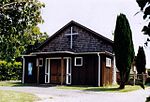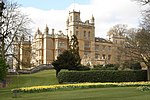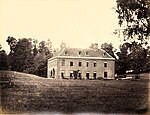Bradfield College
1850 establishments in EnglandBoarding schools in BerkshireBradfield, BerkshireCricket grounds in BerkshireEducational institutions established in 1850 ... and 6 more
Incomplete lists from March 2022International Baccalaureate schools in EnglandMember schools of the Headmasters' and Headmistresses' ConferencePeople educated at Bradfield CollegePrivate schools in West Berkshire DistrictUse British English from February 2023

Bradfield College, formally St Andrew's College, Bradfield, is a public school (English fee-charging boarding and day school) for pupils aged 13–18, located in the small village of Bradfield in the English county of Berkshire. It is noted for its open-air Greek theatre and its triennial Greek Play. The school is a member of the Rugby Group, which also includes Rugby, Harrow, Shrewsbury, Wellington College and Charterhouse. The college was founded in 1850 by Thomas Stevens, Rector and Lord of the Manor of Bradfield. It has around 490 male and 320 female pupils.
Excerpt from the Wikipedia article Bradfield College (License: CC BY-SA 3.0, Authors, Images).Bradfield College
Berkshire Circular Walks,
Geographical coordinates (GPS) Address Phone number Website External links Nearby Places Show on map
Geographical coordinates (GPS)
| Latitude | Longitude |
|---|---|
| N 51.449166666667 ° | E -1.1311111111111 ° |
Address
Bradfield College
Berkshire Circular Walks
RG7 6AU
England, United Kingdom
Open on Google Maps








